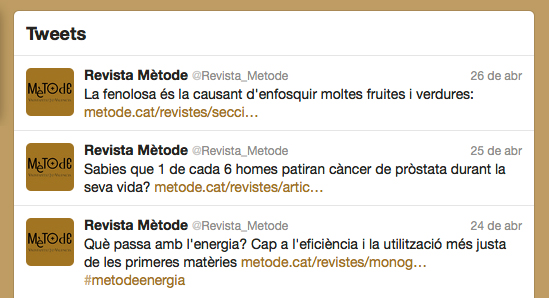 © Mètode © Mètode |
«There is very little literature in a poster. Just enough to make your work understood in a limited space» |
|
|
It could be named MUSA: Minimal Unit of Scientific Activity. Long before publishing an article it is possible to share the results of some experiments in a formal context. Often, these results are preliminary and many of them will never be dealt with again. Perhaps, they would need so much additional work that, in the pubished final version, we won’t find a trace of what was in the poster. It is usually the first experience of a public report of results for unexperienced scientists, an invitation for discussion with strangers. A sort of initiation rite. Then, which is the role of literature in these A0 presentations? Is there room for creativity and talent? I think there is . A poster needs concision. A well-written summary will be more enlightening than a summary written without care. An inspiring title will stand out more than just any title. The thread of development has to catch our attention and emphasize the importance of the images. After all, the image is only a support for the message, not the message in itself. |
|
BIBLIOGRAPHY
Alexander, A. i E. Rensin, 2009. Twitterature: The World's Greatest Books Retold Through Twitter. Penguin. London.
